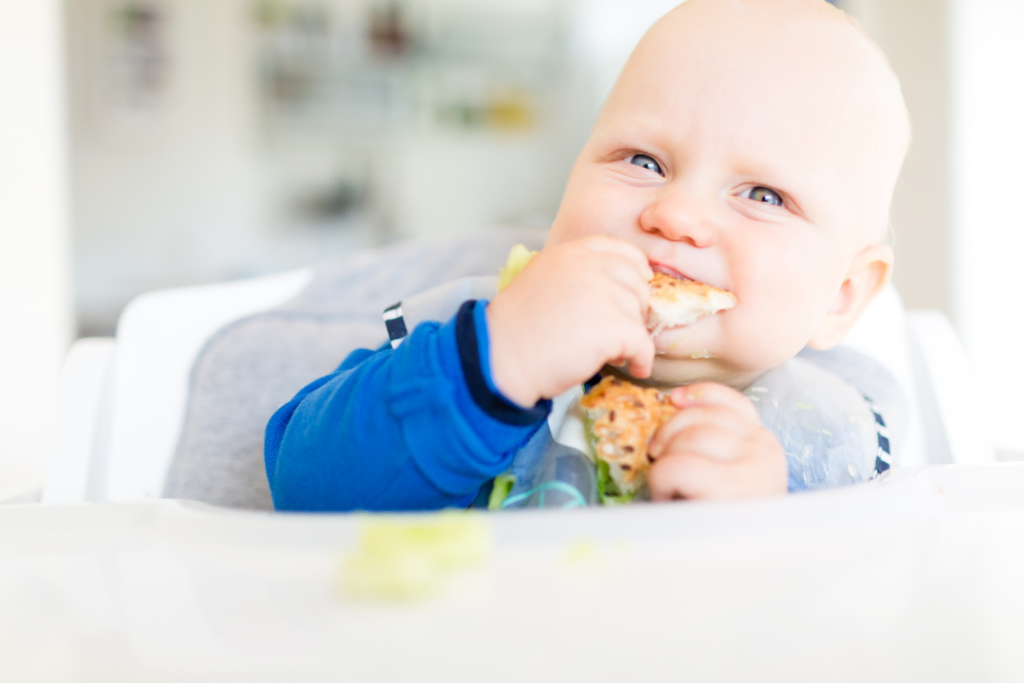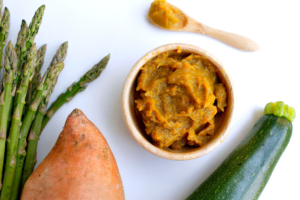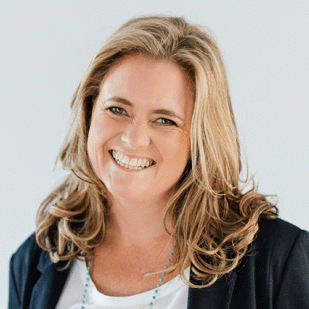The question of how to wean your baby can have lots of new parents riddled with anxiety. A big reason for that is that there’s so much contradictory information out there about how and when to wean your baby onto solids.
Feeding was the most challenging part of my early parenting journey with my firstborn. I battled to breastfeed but persisted until 6 months through many hours of tears and anxiety. Once I introduced James to solids, my anxiety shifted to how much he was eating. It was only when our wonderful nanny took over mealtimes that James’ eating settled into a more pleasant experience. Looking back, I realise that the emotional energy I put into each meal was not good for our relationship or his early feeding experience.
Fast forward to today… as an Occupational Therapist, infant specialist, and mother of 3, I have first-hand experience of just how many myths get passed off as facts when starting solids. It’s one of the reasons I co-wrote Weaning Sense with leading paediatric dietician, Kath Megaw. In this article, Kath and I will be sharing the basics of weaning based on the best scientific research and real-world experience. We’ve weaned 6 children between us so we can relate to your everyday challenges!
So, let’s start by answering a (sometimes) controversial question…
When to start weaning your baby
Weaning is the process of gradually introducing solid foods to your baby’s diet, while reducing their dependency on breast milk or formula. The World Health Organisation (WHO) recommends exclusive breastfeeding for the first six months of a baby’s life, followed by a combination of solid foods and breast milk or formula until at least 12 months of age. But every baby is different, and your individual circumstances need to be considered.
The latest science tells us that while there is no perfect age to start solids, there is a window in which all babies can and should be safely weaned. Weaning your baby between 4 and 6 months of age has been shown to decrease the risk of allergies developing as well as prevent picky eating later.
Watch your baby’s signals beyond 4 months for signs that they’re ready to start solids. Common signs of weaning readiness solids include:
- Your baby can hold their head up
- They’re able to sit well with support
- Seeming dissatisfied after milk feeds
- Showing an increased interest in YOUR food at family mealtimes
- Absence of the ‘tongue thrust reflex’ – i.e., pushing everything that is put in their mouth back out!
If your baby is showing these signs, it is a good indication that they are ready to start weaning.
How do I wean my baby?
Once you’ve determined that your baby is ready to start solids there are a few guiding principles that will get you off to a good start:
- Remember that initially, weaning is more about exposure and experimentation. Don’t get too caught up in how much your baby consumes.
- Weaning your baby should be a gradual process that allows your baby’s digestive system to adjust to new foods.
- Don’t stop milk feeds while you are weaning. Over time, you can reduce milk feeds as your baby reaches 3 meals a day.
- If you’re concerned about your baby’s well-being, consult with a healthcare professional for advice and guidance. Try to avoid the noise, old wives tales and misinformation that often crops up when it comes to weaning.
Myths about weaning your baby
A lot of the conflicting advice about weaning is about what foods to offer your baby. It’s an important subject because scientists tell us that genetic programming and nutritional habits are formed within the first 1000 days of life. That is from conception until two years of age. This period creates the blueprint for your baby’s health.
As parents, there is so much we can do to give our children a positive blueprint for health and healthy eating. It’s also possibly why there’s so many differing opinions about how to start weaning. But let’s dispel some of the myths about weaning your baby that are based on science and the principles of good nutrition:
 Myth: Solids start with baby cereal
Myth: Solids start with baby cereal
Baby cereals are essentially processed carbohydrates and commonly accepted as a baby’s first introduction to solids. We know that breast milk is nature’s elixir so how does cereal compare? Mature breast milk is mostly water with fats (55%), carbohydrates (37%), proteins (8%), as well as important minerals, vitamins, and enzymes. Processed cereals, although often fortified with vitamins and minerals, consist of 78% carbohydrates and 12% fat and 10% protein. So, by introducing baby cereals, we are completely switching the body’s source of energy.
What does that mean? Choose whole fruits and vegetables combined with healthy fats as your baby’s first introduction to solids. Try combinations like:
- Mashed avocado with papaya
- Gem squash and blended olives
- Sweet potato mashed with macadamia nut butter
What all these options have in common is that their nutritional value is more like breast milk than traditional store-bought baby cereal.
Note that healthy, unprocessed grains like millet, spelt, oats, rice and quinoa can be included in your baby’s diet. Check out the Parent Sense app for a fabulous wholegrain baby cereal recipe but bear in mind that there is no rush to introduce these foods in the first few weeks of weaning. You can start introducing them later down the line.
Myth: First foods should be smooth and without lumps
Another common myth is that babies should eat pureed or mashed food exclusively when they start weaning. The downside of weaning on jarred foods is that your baby can become accustomed to the smooth texture and resist other textures. Babies should be exposed to a variety of textures and foods. Not just for their nutritional well-being, but also to avoid picky eating later down the line in the toddler years.
Myth: Avoid common allergens
The latest allergy research shows that offering protein and/or high-risk allergen foods early in the weaning journey is not only safe but can also prevent the child from developing an allergy to a specific protein food. Protein foods include fish, egg, nut butters, chicken, fish, beef, and lamb.
Follow these guidelines when introducing proteins:
- Introduce one new protein every 3-4 days
- Always introduce new proteins at lunch time in case of an allergic reaction
- Once a protein has been tried and tested it can become a suppertime protein
Myth: Start with bitter vegetables so your baby doesn’t develop a taste for sweet foods only
In infancy, the sweet taste buds are predominant and breast milk is sweet. This is nature’s way of ensuring your baby will drink the milk that keeps them healthy and growing. It’s only after a year that bitter taste buds start to develop and that is when you may find your toddler starting to resist bitter vegetables like spinach or green beans. Knowing this, you can safely start your baby off on sweet root vegetables, for example, without worrying that they will only develop a taste for sweet foods. Foods like carrot, sweet potatoes and butternut squash are also gentler on the tummy than leafy greens.
10 practical steps to weaning your baby
Before you start mashing anything, remember that the first step in your weaning journey is to accept that it won’t be perfect. Weaning is linked to development, and it can take several weeks or months to learn how to eat. So, relax, be patient and expect it to get messy!
- Take a gradual approach to starting solids. Use the COLLAB method to allow your baby to set the pace. More on this in my article about common weaning challenges and how to overcome them.
- Start by introducing one meal at a time. Until 6 months old, milk is still your baby’s primary source of nutrition so don’t rush to reduce milk feeds when you start solids.
- Make wholesome foods at home that are nutritionally more like breast milk than processed cereals. Experiment with textures and opt for vegetables, fruit, and healthy fats to start.
- Don’t be afraid to mix sweet and savoury but don’t add salt, sugar, or honey to foods. Get delicious, nutritionally balanced Weaning Sense recipes on Parent Sense.
- Introduce proteins slowly over the course of several days and at lunch times.
- Encourage your partner to participate in feeding your baby, make mealtimes a social time to connect with family in a way that nourishes the body and soul.
- Follow your baby’s cues to know when they’ve had enough. Lots of moms have anxiety about the amount that their baby consumes but be assured that even 2 teaspoons full initially is enough. Equally as important is to ensure that your baby isn’t over fed. Follow their cues.
- After 6 months old, if weaning is going well – start replacing more feeds with solids. As your baby gets older, offer steamed whole finger foods for them to feed themselves.
- If you baby doesn’t take to a food right away, it doesn’t mean it’s forever. It can take up to 15 exposures of a certain food before your baby will eat it.
- Use a small spoon with a soft tip and have a bib handy!
Working with moms in my OT practice and my own experience with my three children taught me so much about how relationships and emotions are a critical part of mealtimes. Be mindful of your cues when feeding your baby solids. If you are tense, stressed, or anxious about weaning there’s a good chance your baby will be too. Relax and be patient – weaning is a wonderful time of bonding and learning more about your baby’s likes, dislikes, and their blossoming personality.
For practical, step-by-step guidance about starting solids, download Parent Sense and access nutritionally balanced meal plans, delicious baby friendly recipes and sign up for our popular Weaning Sense course led by Kath Megaw.

 Myth: Solids start with baby cereal
Myth: Solids start with baby cereal



